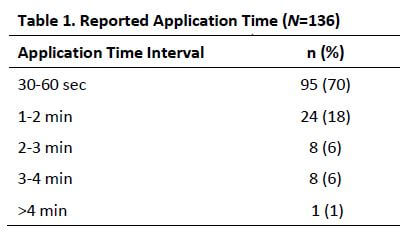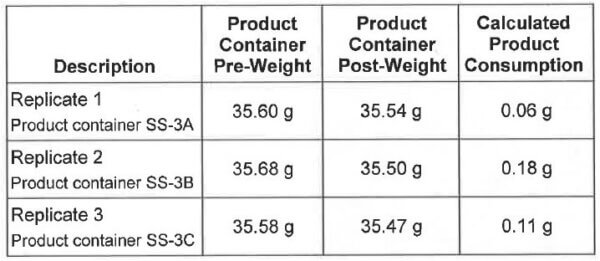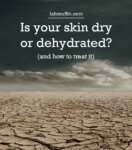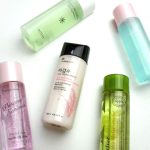I’ve had a lot of questions about certain sunscreen products with unusual claims, and what I think of them. I’ll be talking about what I personally think of the claims for 2 products in this post, but there are a lot more products that I’ll talk about later – let me know if there are more products you’re wondering about in the comments!
YouTube video is here, keep scrolling for the text version…
General note about unusual sunscreen claims
I like to talk to the company to try to understand what their reasoning is for their claim, and whether the claim makes sense based on what we know about how sun protection works.
I try to keep an open mind about claims, because there are a lot of issues with sunscreens and it’s great to see scientists try to solve these issues. There are lots of innovations happening, and brands usually don’t make a lot of their information public for competitive or legal reasons, so you can’t really assume that something doesn’t work just because the information isn’t public – you really need to dig.
And it is usually smaller brands who are innovative. Larger brands are less likely to take risks even if there is market demand. We’ve seen this again and again, where a small brand does something and proves that it can sell, then larger companies hop on the trend or buy out the smaller brand.
On the other hand, smaller brands sometimes don’t have the expertise or experience to test their claims properly, and sometimes they end up making claims that don’t work, or making claims that aren’t allowed by law. So it can be a mixed bag!
Related: The Lab Muffin Guide to Basic Skincare (free sample covers common sunscreen filters)
Here are a couple of the brands that people have asked me the most about, and whether I think their claims have enough evidence to back them up.
Disclaimer: These are my opinions. I could be wrong, but I’ve explained my reasoning here and what tests would actually convince me that these products work. If you have reasons to disagree, or if there’s evidence I’ve missed, share them in the comments.
Colorescience powder sunscreen
Colorescience is a dermatologist favourite, and their most famous product is their powder sunscreen.
Powder sunscreens are really promising – the idea that you can just dust powder on top of your skin and get enough sun protection is awesome. It would make reapplying on top of makeup really easy.
The problem that everyone always points out is that you can’t get enough powder on your face to get even protection. But when I was working on my video about reapplying sunscreen on top of makeup, I noticed that sunscreen powders do sometimes have high SPFs, and some of them even have water resistance – the Colorescience one is SPF 50 and 80 minutes water resistant. What that means is that for the label test, the powder was applied at 2 mg per square centimetre to people’s skin (their skin can be wet), then they sat in a spa for 80 minutes and then they measured the SPF and it was SPF 50.
Related post: How to Reapply Sunscreen Over Makeup (with video)
That’s pretty darn impressive for a powder sunscreen – clearly some of them can cling onto skin pretty well! But 2 mg per square centimetre is a lot of powder.
So I went off and emailed a bunch of powder sunscreen brands about whether they had data on how much they’d expect people to apply of their powder, and what protection people could expect.
Most of the brands I contacted gave me a really generic answer, but Colorescience directed me to some publicly available efficacy and safety data they submitted to the FDA. This was to try to convince them to add powders to the sunscreen monograph, so SPF powders would be recognised as over the counter drugs. It’s meant to show that SPF 50 would be expected with normal levels of application. Unfortunately I don’t think the data actually shows this.
Colorescience’s Methodology
The main study that’s used to work out how much powder consumers put on their faces is in Attachment 2. First they asked 136 customers how long they used the powder brush for – the five multiple choice options were 30-60 seconds, 1-2 min, 2-3 min, 3-4 min or >4 min.
These are the results they got:

They took the shortest time in the first bracket and the midpoints of the rest, then calculated the weighted average to be 60.4 seconds.
Then they collected 10 measurements of how much powder came out of the tube. They weighed the tube at the start, then the people primed the brush, applied it for 15 seconds, weighed the brush again primed it again, went for another 15 seconds and so on, then added the weights at the end after a total of 60 seconds and 4 priming sessions. Priming the brush involves tapping it and flicking the bristles until a puff of powder goes into the air.
On average, the 60 second application made the brush lighter by 0.24 g, using an average face size of 360 square centimetres it translated to 0.65 mg/cm2.
From the water resistance test they found that there was 0.542 mg/cm2 left on the skin to get the water resistant SPF of 52, so the average consumer application would be enough to get the labelled SPF.
I think there are a bunch of problems with this methodology, that would bias it towards overestimating the amount people would normally apply of the powder.
Time estimate?
Firstly, the time was self-reported. Self-reporting is pretty unreliable – especially with timing. We’re all just really bad at estimating time. Remember at the start of the pandemic when we had to wash our hands for 20 seconds and it turned out to be way longer than expected? Similarly, these results are probably overestimating how long they’re taking to apply the powder.
Secondly, the smallest bracket is 30-60 seconds. When I apply powder it takes maybe 5 seconds, maximum. 30 seconds is 3 Happy Birthdays, which is a pretty long time. We don’t know if people would’ve picked a lower time if it was an option.
Powder weight?
I think the other part of the methodology also overestimates how much powder ends up on your face.
First, it’s measuring how much powder came out of the tube. If you’ve ever applied powder, you know you end up with a cloud of dust and not all of it ends up on your face. The amount that starts on your face also doesn’t always stay on your face.
There’s also the priming – the brush was tapped and reloaded and flicked every 15 seconds in the test, but the instructions just say to do this “as necessary”. If you don’t prime as much then less powder comes out, plus powder goes into the air when you prime it.
There’s actually another example of this process in another part of the FDA submission. In a safety study (Attachment 8), the volunteer (who had experience in using powder sunscreens) primed the brush according to the instructions and applied 3 layers to face, neck, upper chest and shoulders. She only used 0.06-0.18 g of product, compared to the 0.24 g estimated for only the face with the two step method.

This is with an older version of the brush that doesn’t let the powder flow out as efficiently, and the person in the study mightn’t have primed the brush properly. It was also only one person in this study.
But even with the new brush, the current info page says it’s a 90 day supply with typical usage (it’s $65 USD for the brush, so it doesn’t seem like that bad a deal).
But the brush has 6 g of powder, so assuming only one application on your face per day and all of the powder ends up on your face (which it doesn’t if you prime the brush properly), that works out to be 0.19 mg/cm2 – less than half of the typical usage estimated in Attachment 2.
If each application was 0.24 g (as estimated in the sun protection tests), it would last you only 25 uses, which is not that great for a $65 product.
So Colorescience doesn’t really seem to have a consistent estimate for “typical usage” – it seems to change with what aspect of the product they’re talking about.
What methodology could work
The experiment that would convince me of high protection with this powder sunscreen: getting customers who already use the brushes to apply the product on themselves as they normally would, without watching the clock. Then you could either weigh the brush, or better still wipe the powder off a set area of their face and weighing it like they did in the water resistance test. Then the amount on the skin could be compared to the 0.542 mg/cm2 that gave SPF 52. I would say testing the SPF, but I don’t think people would volunteer to get their faces burnt for science.
I think it would also be pretty interesting to see what 0.5 mg/cm2 of powder looks like on your skin.
Colorescience also point out that they have a really high percentage of zinc oxide and titanium dioxide in their powder, and you end up with a higher amount with 0.5 mg/cm2 when you apply it than when you have a lotion. But the problem is the formula makes a big difference. Lotions stick to your skin better than powders, you just don’t end up with a lot of powder on your skin with the way you normally put them on, and gaps are pretty inevitable with powders.
Verdict
Overall, I think Colorescience’s product is one of the best, if not the best sunscreen powders on the market. The water resistance data is really impressive. But I just don’t think ANY sunscreen powders work all that well at the moment with how people normally use them, compared with the unrealistic way that SPF tests are conducted.
Colorescience have data that shows that people prefer powders, and reapply them 3 times more often than other products, so it would be great to see a powder that actually delivered on the protection. But I don’t think the evidence is convincing yet.
Skinnies “Pea-Sized Amount” Sunscreen
Another brand that people have been asking me a lot about is Skinnies.
Skinnies is a New Zealand brand, and they’re famous for the claim that you only need a pea-sized amount of their sunscreen for your face, neck and ears. Their sunscreen doesn’t have water, so the argument is that since regular sunscreens have water that mostly evaporates off or soaks into skin, then you can skip that step by applying a sunscreen minus the water, so you don’t need to apply as much.
Skinnies’ Methodology
The rationale the brand gives for the pea-sized claim is:
The average male face size is 375 cm2.
At 1.3mg/cm2, Skinnies sunscreen has an SPF of 78.4 (they got this from their UVA test). Since the relationship between the amount of sunscreen applied and the SPF is on average linear, 40% of 1.3 mg/cm2 (0.52mg/cm2) should give you 40% of the SPF (SPF 30).
This works out to be 195 mg over the 375 cm2 or half a pea, but they double it to be safe.
Linear relationship?
The problem with this argument is that firstly, not all sunscreens give a linear relationship between amount and SPF. In other words, using 40% of the amount you need might give you less than 40% of the labelled SPF.
Related post: How SPF Changes With How Much Sunscreen You Use
Uniform application?
The bigger problem is that skin is bumpy. There are valleys that tend to get filled in before the hills get any coverage, so it isn’t like you’re just applying a thinner layer when you apply less sunscreen, you’re also applying a patchy layer.
It’s like applying watercolour paint straight out of a tube vs applying it after you’ve diluted it with water – the version with water spreads better over a larger surface and you end up with an even layer, even though you’ve applied the same amount of paint, but the thicker paint doesn’t spread evenly. Water is inactive, but it’s there for a reason.
Skin being bumpy is why sunscreens are tested at 2 mg/cm2, even though studies have found that people normally apply less sunscreen than this. 2 mg/cm2 is how much sunscreen you need for consistent results, probably because less gives patchy protection and that patchiness gives unpredictable results. With a product like sunscreen, you want to be able to confidently say that most people applying the right amount evenly will get the labelled protection.
Verdict
It’s possible that this particular sunscreen applies incredibly smoothly so it could actually work, but that would be unusual. And to show that a product behaves unusually, we need good evidence.
Skinnies have said that they’re trying to get the sunscreen tested at lower application amounts, but labs say they can’t do it because it’s not the standard testing protocol. This is a problem with innovative sunscreen products – it can be really hard to test them, and it’s really frustrating and it sucks. But I really think for a claim like this you need to test the tiny amount on skin and see what happens, for a number of people.
I do think that the way that sunscreens are tested and regulated can hold back innovation. There are strict rules around what you can and can’t claim, and a lot of the things you can’t claim would be things that would improve the user experience and user safety. But these rules do also protect users from unsafe products and from using sunscreens improperly (which is very common).
I think Skinnies sunscreens are really cool and innovative – I’ve been sent some PR samples and they feel super spreadable, so I think it’s possible that a pea-sized amount could spread out into an even film.
Skinnies have been trying to get the evidence, and they say they have 10 years of user experience, but I don’t think that’s enough evidence to be able to make the pea-sized amount recommendation.
So remember, these are just my opinions about what these companies claim.
What do you think? Are there other SPF products with weird claims you want me to look into?
References
Colorescience submission to the FDA: https://www.regulations.gov/document?D=FDA-1978-N-0018-11412
Petersen B, Wulk HC, Application of sunscreen – theory and reality (open access), Photodermatol Photoimmunol Photomed 2014, 30, 96-101. DOI: 10.1111/phpp.12099
Korn V, Surber C, Imanidis G, Skin surface topography and texture analysis of sun-exposed body sites in view of sunscreen application (open access), Skin Pharmacol Physiol 2016, 29, 291-299. DOI: 10.1159/000450760






Ah what timing Michelle! Just yesterday I ordered the Skinnies Sungel. I’m curious to try the formula but honestly, I can’t see myself only using a “pea-sized amount”, it goes against my more is better mantra.
I’m still looking for my HG water-resistant sunscreen that is fragrance free, doesn’t leave a sticky white cast and is minus certain sunscreen actives my skin reacts to. Fingers crossed this is a good one.
I’m definitely interested in the Colorescience powder for reapplication, like you mention. The problem is that I could never get the thing to dispense any product, or if it WAS dispensing I couldn’t tell if I had enough. Maybe I got a bad container? I don’t know, I felt like I would rather just reapply a light liquid–I don’t wear foundation anyway so it’s not like I’m going to be ruining a bunch of makeup. I just liked the ease and portability of the powder.
I’ve long dumped the Colorscience powder into a normal powder shaker. The kind that mineral powders come in with the twist to shake/seal inside. Then I just pour into the lid and apply with a flat head kabuki brush. I probably get closer to the SPF claimed.
I had the same issue as Jill with respect to dispensing powder from the Colorscience container. I emptied the container into a jar so that I could apply it with a powder brush but since it’s not portable that way, I have never used it. I think now I will just declutter it because I feel too much work will be involved in getting the application right and I am already dealing with how to repurpose three tubes of Purito.
I think a powder sunscreen will work better if it were in compact form and applied with a puff rather than brush. I’m personally struggling with anxiety when it comes to affordable, effective, and no-whitecast sunscreens; it has become such a hassle.
Thank you for the work you do because it makes my life easier
Hi Michelle, I tried the Skinnies in the past as I am a sunscreen freak as I am fair and burn easily with a family history of skin cancer, so always use SPF 50 and at the recommended amount – so sunscreens are never a little goes a long way for me! Anyway I tried the Skinnies at the pea size amount as per their directions on my face and I got sunburnt! I read online reports of the same happening to others – including children (which is scary for their future risk of skin cancer) and the Skinnies comeback was that users must not be applying it correctly! Well a pea sized amount is pretty self-explanatory so should NOT be getting burnt if applying the amount that Skinnies state if it really does work. So yeah, I am skeptical especially as the claims can’t be backed up with testing, and due to my own experience (and others). The Consumer watchdog in New zealand tested it and it passed at SPF 50 BUT BUT BUT it was NOT tested at peas sized amount as per Skinnies instructions but at the usual 2mg/cm2 so that is NOT evidence of effectiveness as it was NOT tested as pea sized amount. Australia and New zealand both have highest rates of melanoma in the world – so effective sunscreens are are must!
Argh! I was very surprised to see that New Zealand doesn’t regulate sunscreens as therapeutic products. The pea-sized claims on the packaging wouldn’t fly in Australia – unfortunately when someone tried to report it to our TGA they were told that it wasn’t sold in Australia (even though they ship to Australia) so they couldn’t do anything.
That is really interesting – I would love for all that to work as claimed, it would just be so convenient! But I guess for the time being I will stick to regular sunscreens with regular quantities.
I skeptically tried Colorscience because my skin is so oily that lotion sunscreen left my face a hot mess. I applied as directed over makeup on my face, chest and backs of my hands. I never had trouble with the powder dispensing, to the point I thought it might be over dispensing (and the price). I just monitored my apply time, 10 seconds and I apply 3x so 30 seconds each on face and chest. I use this in lieu of face powder. Less on hands, 5 seconds, one time so suboptimal. to reapply, I blot my face and do the same, approx every 2 hours. I’ve never had a sunburn as I’ve had using same SPF lotions. I use on regular days as well as vacation, where I’m outside most of the day -no sunburn on face/chest yet I’ve had some on forearms and legs at the beach (I don’t go in the water and I reapply lotion sunscreen as directed). My worry now is that I’m not getting the level of protection I thought, but at least I feel it’s better than lotions.
I actually really like the Colorscience powder. It’s a lot easier to use on the golf course as a reapplication sunscreen than a lotion one. I put a lotion sunscreen on before my round and then use the powder at the turn. I also will put it on my ears, neck and décolleté, and my hair part line if I am not wearing a hat. My application time is probably around 20-30 seconds…I should probably do longer. But I have never gotten burned while using it and I feel it’s better than not reapplying at all.
What do you think about using zinc oxide powder and mixing it with a mineral powder or even a loose makeup setting powder? Could that work as a diy sunscreen? Then it is cheaper and could be applied with a cushion/puff liberally without worry about “ using up such an expensive product.
Colorescience’s powders have special coatings to increase their effectiveness and they still don’t work great, so I wouldn’t expect a generic zinc oxide powder with no optimisation to do well at all.
Skinnies recently announced an independent test in Germany verified that their spf 30 has an spf of 30 when applied at 1mg/cm2, which they claim supports their “pea sized blob” recommendation. However, I’m confused. 2mg/cm2 works out to about 1/4 tsp for face, neck, and ears for most people. A pea sized blob is significantly less than half that. Am I mathing wrong, or would that be correct, assuming their testing was reliable?
I can’t find the actual report, but they posted about it on 3 Sept on their Facebook page.
I believe they used the calculation I outlined, but it’s kind of hilarious that they’ve essentially admitted their pea-sized blob advice was previously based on thoughts and prayers…